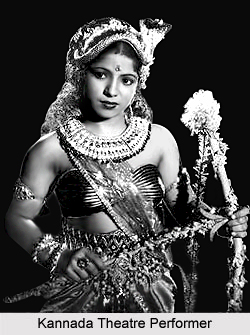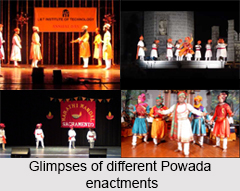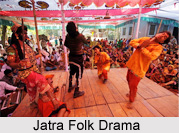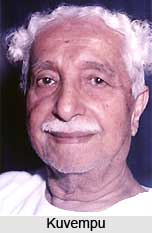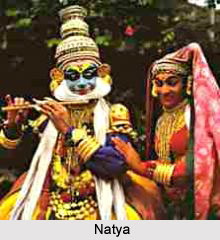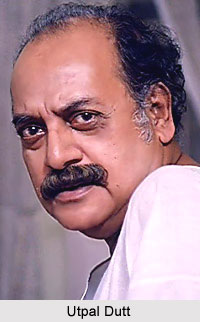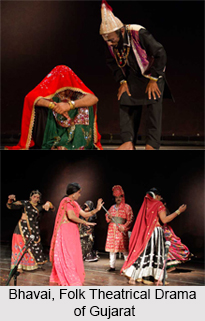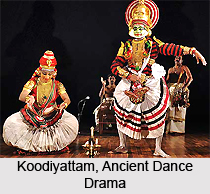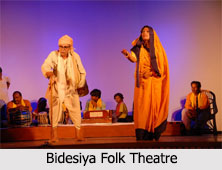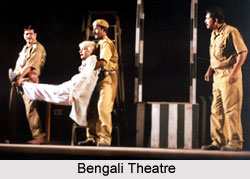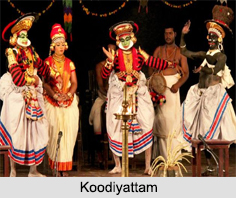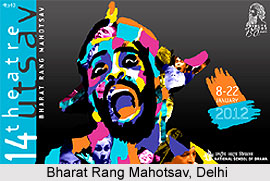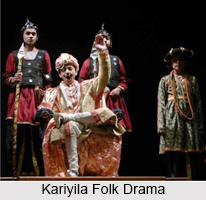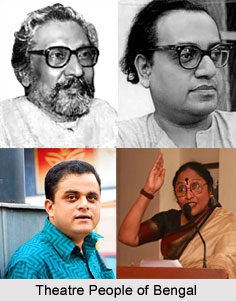Rupakas or major types of Sanskrit drama were introduced by Bharata in the Natyashastra. Bharata`s classification of dramas remained authoritative for later theorists. Rupaka deals with satvika temperament and other abhinayas. Though the later theorists started all kinds of innovations leading to further divisions and sub-divisions but have not, however, attempted to modify anything of the ten Rupakas described by Bharata. But the later kinds of drama which did not fit in with Bharata`s description of Rupakas were treated and systematised as new kinds of drama.
Rupakas primarily deals with satvika temperament and other abhinayas. Bodily gestures and music occupy a secondary position in Rupaka. The Bhavaprakasana very clearly states that Rupakas were rasatmaka or which are dependent on sentiment. There are ten types of Rupakas namely, Nataka, Prakarana, Samavakara, Thamrga, Dima, Vyayoga, Anka, Prahasana, Bhana and Vithi. According to Bharata, when the peculiarities of society were sought to be connected with certain gestures or when the actions of gods, rishis, kings or of the members of a society were copied, they came to be called a Nataka. In a Nataka all vrittis should be in their proper place consisting of from five to ten acts. According to the Dasarupa, in a Nataka the hero should be endowed with striking qualities of the type known as the self-controlled and exalted and should be glorious, desirous of winning fame, full of life, a preserver of the three Vedas, a ruler of the world, of well-known lineage and a royal seer or a god. One sentiment, either the heroic or the erotic, is to be made the principal sentiment, all others being made subordinate. The marvellous sentiment should be employed only towards the end.
In the Prakarana class all the vrittis can be employed. According to the Dasarupa, the action should be invented and should take place on the earth. A minister, a Brahmana, or a merchant, of the type known as self controlled and composed, under going hardship and having virtues, the search for contentment and wealth being his chief objects in life, should be the hero. In a Prakarana the heroine may be of two kinds, the high-born wife of the hero or a courtesan. In some plays, there is only the high-born woman; in some plays only the courtesan; and in some, both. High-born women remain indoors, the courtesan outside, and the two should never meet. There are three classifications of heroine like suddha, with the wife as heroine; vikrita, with the courtesan; and sankirna, with both.
In the Samavakara class the contents are borrowed from well known legends of gods and demons. It is to consist of three acts presenting the three kinds of deception, the three kinds of excitements or the three kinds of love. The first act should last for twelve natikas; the second, for four; and the third, for two minutes; a natika is equal to twenty four minutes. This kind of drama is called Samavakara because various themes are scattered about in it. It may have as many as twelve characters. In the Thamrga dramas the story is of a mixed type, partly legendary and partly invented. It is divided into four acts with three stages. The hero and his adversary may either be human or divine, without restraint; they should be prominent persons and of the type known as self-controlled and fervent, the latter committing improper arts by mistake. There are scenes of rage and wrath but the characters are prevented from dashing into battle by some pretense.
In the Dima type of Rupaka, the subject matter must be well identified and all the styles may be employed in it except the gay style. Its heroes, sixteen in number, should be gods and gandharvas, all of them vehement. It contains all the sentiments except the comic and erotic. According to the Dasarupa, the name Dima is equivalent to sahghata (injuring), inasmuch as the heroes always come to blows among themselves. It also to comprise incidents such as an earthquake, fall of meteors, an eclipse of the sun or the moon, encounter, personal battle, challenge and fuming conflict. To the old popular stage also belongs the Vyayoga which derives its name from the fact that in it many men oppose one another. The plot does not last for more than one day, and there is a lot of fighting and disagreement, in which, however, women play no part. It is a one act play.
An Anka is a one-act drama. The plot in it is generally well known, but it may sometimes be otherwise. It relates to one`s fall and is to be furnished with male characters other than those who are divine. It abounds in the pathetic sentiment and treats of women`s lamentations and despondent utterances at a time after battles and violent fighting have ceased to rage. Small plays inserted into dramas are often designated as Ankas. The Prahasana (farcical comedy) has been borrowed from the popular stage. The poet takes the plot from daily life and surrounds it with all kinds of illusions, wordy disputes and disagreements between rogues and insignificant persons. There are two kinds of Prahasana, the pure (suddha) and the mixed {sankirna). In the suddha type, Shaiva gurus (bhagavat), Brahmanas and persons belonging to various strata of society appear, each one speaking his special dialect or devoting himself to his special calling. In the sankirna Prahasana, courtesans, slaves, eunuchs, parasites (vita) and rogues appear. According to the Dasarupa and the Sahityadarpana, there is yet a third kind of Prahasana, the distorted type (vikrita), where eunuchs and chamberlains appear as gallants.
The Bhana has also a popular source. The piece is acted by a single actor who appears as a man of the world and indeed as the chief vita. For this reason he describes partly his own adventures and partly those of others. He uses the monologue and pretends to see and hear others. He acts, speaks, asks questions and answers on behalf of the make-believe persons. He makes appropriate gestures. It is clear that the Bhana has developed from the pantomime or the musical dance and this explains why lasya is used in it. It is also a one-act play. Similar to the Bhana was the one-act Vithi. The Vithi was acted by two players. The Sahityadarpana remarks that according to the view of any anonymous authority, three actors may also appear, one playing the role of a person placed high in life (uttama), another of the middle rank (madhyama) and a third one of the lowly (adhama). In all cases the conversations are with imaginary persons.







